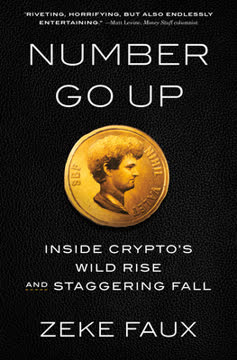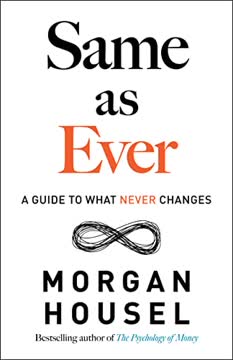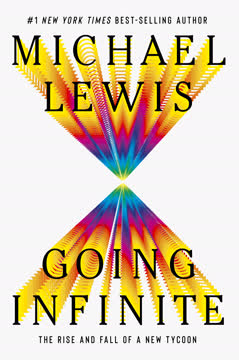Key Takeaways
1. The semiconductor industry shapes global power dynamics
"Chips shaped the geography of globalization, knitting together Asia and the United States in ways that are now impossible to disentangle."
Geopolitical influence. The semiconductor industry has become a critical factor in shaping global power dynamics. Its influence extends beyond mere economic considerations, affecting national security, technological advancement, and international relations.
Economic impact. The industry's global value chain involves trillions of dollars in trade, with chips being essential components in everything from smartphones to advanced weapon systems. Countries that dominate various segments of the semiconductor industry wield significant economic and technological power.
Strategic importance. Control over semiconductor technology and manufacturing has become a key strategic asset for nations. It influences military capabilities, economic competitiveness, and technological independence. The industry's concentration in specific regions, particularly East Asia, has created new geopolitical tensions and dependencies.
2. From vacuum tubes to integrated circuits: The birth of Silicon Valley
"The invention of the integrated circuit transformed not just electronics but the geography of innovation."
Technological revolution. The transition from vacuum tubes to integrated circuits marked a pivotal moment in technological history. This shift enabled the miniaturization of electronics, paving the way for the digital revolution.
Silicon Valley's rise. The development of integrated circuits gave birth to Silicon Valley as the global center of technological innovation. Key figures like William Shockley, Robert Noyce, and Gordon Moore played crucial roles in this transformation.
- Shockley Semiconductor Laboratory: Founded in 1956, it attracted top talent
- Fairchild Semiconductor: Established in 1957 by the "traitorous eight"
- Intel: Founded in 1968 by Noyce and Moore, became a semiconductor giant
Innovation ecosystem. Silicon Valley's unique combination of academic institutions, venture capital, and entrepreneurial spirit created an unparalleled ecosystem for technological innovation, setting the stage for decades of semiconductor advancements.
3. Cold War drives semiconductor innovation and global supply chains
"The U.S. strategy was to make Japan an 'electronics salesman,' not a rival."
Military applications. The Cold War spurred massive investments in semiconductor technology, with both the US and USSR recognizing its potential military applications. This rivalry drove rapid advancements in chip design and manufacturing.
Global supply chains. To maintain its technological edge, the US encouraged the development of semiconductor industries in allied countries, particularly in East Asia. This strategy led to the creation of complex global supply chains that persist today.
- Japan: Encouraged to develop consumer electronics
- South Korea: Supported in developing memory chip production
- Taiwan: Fostered as a key manufacturing hub
Unintended consequences. While this strategy successfully contained Soviet technological progress, it also laid the groundwork for future challenges to US semiconductor dominance as allied countries developed their own robust industries.
4. Japan's rise and fall in the semiconductor industry
"Japan's chip companies were not just competing with Silicon Valley; they were crushing it."
Rapid ascent. Japan's semiconductor industry experienced meteoric rise in the 1980s, dominating global memory chip production. This success was built on government support, efficient manufacturing processes, and a focus on quality.
Market dominance. By the late 1980s, Japanese companies like NEC, Toshiba, and Hitachi controlled a significant portion of the global semiconductor market, particularly in DRAM (Dynamic Random Access Memory) chips.
Eventual decline. However, Japan's dominance was relatively short-lived. Several factors contributed to its decline:
- Overinvestment in DRAM production
- Failure to adapt to the shift towards microprocessors
- Rise of competitors in South Korea and Taiwan
- US trade pressure and semiconductor trade agreement
5. Taiwan emerges as a critical player in chip manufacturing
"Taiwan Semiconductor Manufacturing Company (TSMC) has become the most important company in the world that most people have never heard of."
Foundry model innovation. TSMC, founded by Morris Chang in 1987, pioneered the "pure-play foundry" model, focusing solely on manufacturing chips designed by other companies. This model revolutionized the semiconductor industry.
Global dominance. TSMC has become the world's leading semiconductor manufacturer, particularly for advanced chips. Its technological prowess and scale have made it an indispensable part of the global tech ecosystem.
Geopolitical implications. Taiwan's central role in chip manufacturing has significant geopolitical implications:
- Creates a "Silicon Shield" against potential Chinese aggression
- Raises concerns about supply chain vulnerability
- Becomes a focal point in US-China technological competition
6. China's push for semiconductor independence threatens US dominance
"Xi Jinping has called for China to 'make breakthroughs in core technologies as soon as possible.'"
Strategic priority. China has identified semiconductor independence as a key national priority, viewing its reliance on foreign chips as a strategic vulnerability. This push is part of broader efforts to become a global technological leader.
Massive investments. The Chinese government has committed hundreds of billions of dollars to develop its domestic semiconductor industry. This includes:
- Establishing national investment funds
- Providing subsidies to chip companies
- Encouraging foreign technology transfers
Global implications. China's semiconductor ambitions have far-reaching consequences:
- Intensifies technological competition with the US
- Disrupts existing global supply chains
- Raises concerns about potential military applications of advanced chips
7. The future of warfare: AI and advanced chips as the new battleground
"The nation that leads in AI will rule the world."
AI-driven warfare. Advanced semiconductors are crucial for developing and deploying artificial intelligence systems in military applications. This includes autonomous weapons, advanced targeting systems, and real-time battlefield analysis.
Computational power race. The ability to process vast amounts of data quickly is becoming a key determinant of military superiority. This has led to a race for more powerful and efficient chips specifically designed for AI applications.
Dual-use technologies. Many advanced semiconductors have both civilian and military applications, blurring the lines between commercial and defense technologies. This complicates efforts to control the spread of sensitive technologies and raises new challenges for export controls.
8. US policy shifts: From "run faster" to technological containment
"The old approach of 'run faster' is not enough. We need to slow them down too."
Policy evolution. US semiconductor policy has shifted from primarily focusing on maintaining a technological lead through innovation to actively working to contain China's technological progress.
Export controls. The US has implemented increasingly stringent export controls on advanced semiconductor technologies, aiming to limit China's access to cutting-edge chips and manufacturing equipment.
Domestic investments. Recognizing the strategic importance of semiconductors, the US government has begun to invest more heavily in domestic chip manufacturing and research:
- CHIPS Act: Provides billions in subsidies for US chip production
- National Semiconductor Technology Center: Aims to accelerate chip innovation
9. The global chip shortage exposes supply chain vulnerabilities
"The chip shortage has revealed how fragile and geographically concentrated semiconductor supply chains have become."
Supply chain disruption. The 2020-2021 global chip shortage highlighted the vulnerabilities in the semiconductor supply chain, affecting industries from automotive to consumer electronics.
Concentration risks. The shortage exposed the risks of having chip production concentrated in a few geographic areas, particularly Taiwan and South Korea. This has led to calls for greater diversification of manufacturing locations.
Policy responses. Governments and companies worldwide have responded to the shortage by:
- Increasing investments in domestic chip production
- Seeking to diversify supply chains
- Reevaluating inventory and procurement strategies
Last updated:
FAQ
1. What is "Chip War: The Fight for the World's Most Critical Technology" by Chris Miller about?
- History of Semiconductors: The book traces the invention, development, and global spread of semiconductor technology, focusing on how chips became the foundation of modern life, economies, and military power.
- Geopolitical Competition: It explores the intense international competition—especially between the US, China, Japan, Taiwan, and the Soviet Union—to control chip design, manufacturing, and supply chains.
- Key Players and Companies: The narrative highlights the roles of major companies (like Intel, TSMC, Samsung, and ASML) and influential individuals (such as Morris Chang, Andy Grove, and Akio Morita).
- Modern Implications: The book connects historical developments to current events, showing how chip shortages, trade wars, and national security concerns shape today’s world.
2. Why should I read "Chip War" by Chris Miller?
- Understand Global Power Shifts: The book explains how control over semiconductors underpins economic and military power, making it essential for understanding 21st-century geopolitics.
- Insight into Technology’s Role: It reveals how chips are embedded in everything from smartphones to missiles, and why their production is so complex and concentrated.
- Lessons from History: By examining past successes and failures in the chip industry, readers gain perspective on current supply chain vulnerabilities and future risks.
- Engaging Storytelling: Chris Miller combines technical clarity with compelling stories of innovation, espionage, and corporate rivalry, making the book accessible and gripping.
3. What are the key takeaways from "Chip War" by Chris Miller?
- Semiconductors as Strategic Assets: Chips are not just commercial products—they are strategic resources that shape national security, economic growth, and technological leadership.
- Global Supply Chain Fragility: The highly specialized and geographically concentrated chip supply chain is both a marvel of efficiency and a source of vulnerability.
- Innovation and Industrial Policy: Government support, talent migration, and corporate strategy have all played crucial roles in determining which countries and companies lead in semiconductors.
- The New Cold War: The US-China rivalry over chips is a defining feature of modern geopolitics, with export controls, subsidies, and technological decoupling reshaping the industry.
4. How did the semiconductor industry originate and evolve, according to "Chip War"?
- Post-WWII Innovation: The industry began with the invention of the transistor at Bell Labs, followed by the integrated circuit, driven by military and space race needs.
- Rise of Silicon Valley: Key figures like William Shockley, Robert Noyce, and Gordon Moore established the culture and business models that made Silicon Valley the global center for chip innovation.
- Globalization of Manufacturing: As costs rose, companies moved assembly and manufacturing to Asia, especially Taiwan, South Korea, and Japan, creating today’s global supply chain.
- Government and Military Influence: US government funding and procurement, especially for defense, were critical in the early decades, while later, Asian governments used industrial policy to catch up.
5. What is the significance of Taiwan and TSMC in the global chip industry, as described in "Chip War"?
- TSMC’s Founding and Model: Morris Chang founded TSMC in Taiwan, pioneering the “foundry” model—manufacturing chips designed by other companies—which revolutionized the industry.
- Concentration of Advanced Manufacturing: TSMC now produces the vast majority of the world’s most advanced chips, making Taiwan a critical node in the global supply chain.
- Geopolitical Vulnerability: The book highlights how Taiwan’s centrality creates both economic power and strategic risk, especially given tensions with China.
- “Silicon Shield” Concept: Taiwan’s chip industry is seen as a deterrent against conflict, as its destruction would disrupt the global economy.
6. How does "Chip War" explain the US-China rivalry over semiconductors?
- China’s Ambitions: China has invested heavily in building its own chip industry, aiming for self-sufficiency and global leadership, as outlined in policies like “Made in China 2025.”
- US Export Controls: The US has responded with export restrictions on advanced chips and manufacturing equipment, targeting companies like Huawei and SMIC to slow China’s progress.
- Technology Transfer and Espionage: The book details cases of technology transfer, joint ventures, and alleged intellectual property theft as China seeks to close the gap.
- Strategic Stakes: The rivalry is about more than commerce—it’s about military power, economic independence, and the future of global technology standards.
7. What are the main technological and supply chain bottlenecks ("chokepoints") in the chip industry, according to "Chip War"?
- Extreme Concentration: Key stages—like advanced chip manufacturing (TSMC, Samsung), lithography equipment (ASML), and design software (US firms)—are dominated by a handful of companies.
- Export Controls as Leverage: The US and its allies can restrict access to critical tools and software, effectively “choking” rivals’ ability to produce leading-edge chips.
- Vulnerability to Disruption: Natural disasters, pandemics, or conflict in Taiwan could halt global chip production, affecting everything from cars to defense systems.
- Difficulty of Replication: Building new fabs or duplicating advanced equipment takes years and massive investment, making these chokepoints persistent.
8. How did Japan, South Korea, and Europe fit into the semiconductor story in "Chip War"?
- Japan’s Rise and Fall: Japan became a chip powerhouse in the 1980s through government support and manufacturing excellence, but later lost ground to the US and South Korea due to market shifts and strategic missteps.
- South Korea’s Success: Companies like Samsung and SK Hynix, with strong government backing, became global leaders in memory chips, leveraging scale and aggressive investment.
- Europe’s Niche Strengths: While Europe lost out in chip manufacturing, it remains vital in equipment (ASML) and some specialized chip markets.
- Lessons in Industrial Policy: The book contrasts different approaches to government intervention, showing both successes and failures.
9. What are the key concepts and terms explained in "Chip War" by Chris Miller?
- Moore’s Law: The observation that the number of transistors on a chip doubles roughly every two years, driving exponential growth in computing power.
- Foundry Model: A business model where companies like TSMC manufacture chips designed by others, enabling the rise of “fabless” design firms.
- Chokepoints: Critical nodes in the supply chain (e.g., advanced lithography, EDA software) where a single company or country dominates.
- Export Controls and Decoupling: Government policies to restrict technology transfer, aiming to protect national security and maintain technological advantage.
10. How does "Chip War" address the future of the semiconductor industry and potential risks?
- End of Moore’s Law?: The book discusses the slowing of Moore’s Law and the challenges of further miniaturization, requiring new materials and architectures.
- AI and Custom Chips: The rise of artificial intelligence and specialized chips (like GPUs and TPUs) is reshaping the industry and competition.
- Supply Chain Resilience: Governments and companies are investing in domestic manufacturing to reduce dependence on foreign suppliers, but this is costly and slow.
- Geopolitical Flashpoints: The risk of conflict over Taiwan, trade wars, and technological decoupling could disrupt the industry and the global economy.
11. What are some of the most important quotes from "Chip War" and what do they mean?
- “We are competing for everything.” – This quote encapsulates the book’s central thesis: the chip war is about economic, military, and technological supremacy.
- “No one wants to destroy Taiwan’s semiconductor supply chain.” – Highlights the paradox that Taiwan’s importance is both a shield and a source of risk.
- “Chips are the new oil.” – Emphasizes that semiconductors are now as strategically vital as energy resources once were.
- “Weaponized interdependence.” – Refers to how global supply chains can be used as tools of coercion or leverage in international politics.
12. What practical lessons and policy recommendations does Chris Miller offer in "Chip War"?
- Invest in R&D and Talent: Sustained innovation requires investment in research, education, and attracting global talent.
- Diversify Supply Chains: Reducing over-reliance on any single country or company is crucial for resilience.
- Balance Openness and Security: Policymakers must weigh the benefits of global collaboration against the risks of technology transfer to rivals.
- Prepare for Disruption: Governments and businesses should plan for potential shocks—whether from conflict, natural disasters, or technological shifts—to the chip supply chain.
Review Summary
Chip War receives high praise for its comprehensive history of the semiconductor industry, geopolitical insights, and accessible writing style. Readers appreciate the detailed explanations of chip technology and its global impact. Some criticize the pro-US bias and repetitive content. Many find it eye-opening regarding the fragility of the global tech supply chain and the strategic importance of Taiwan. The book is lauded for its relevance to current geopolitical tensions and its exploration of the complex relationships between technology, economics, and politics.
Similar Books










Download PDF
Download EPUB
.epub digital book format is ideal for reading ebooks on phones, tablets, and e-readers.




